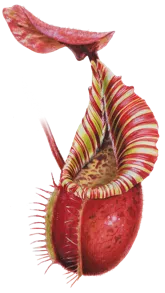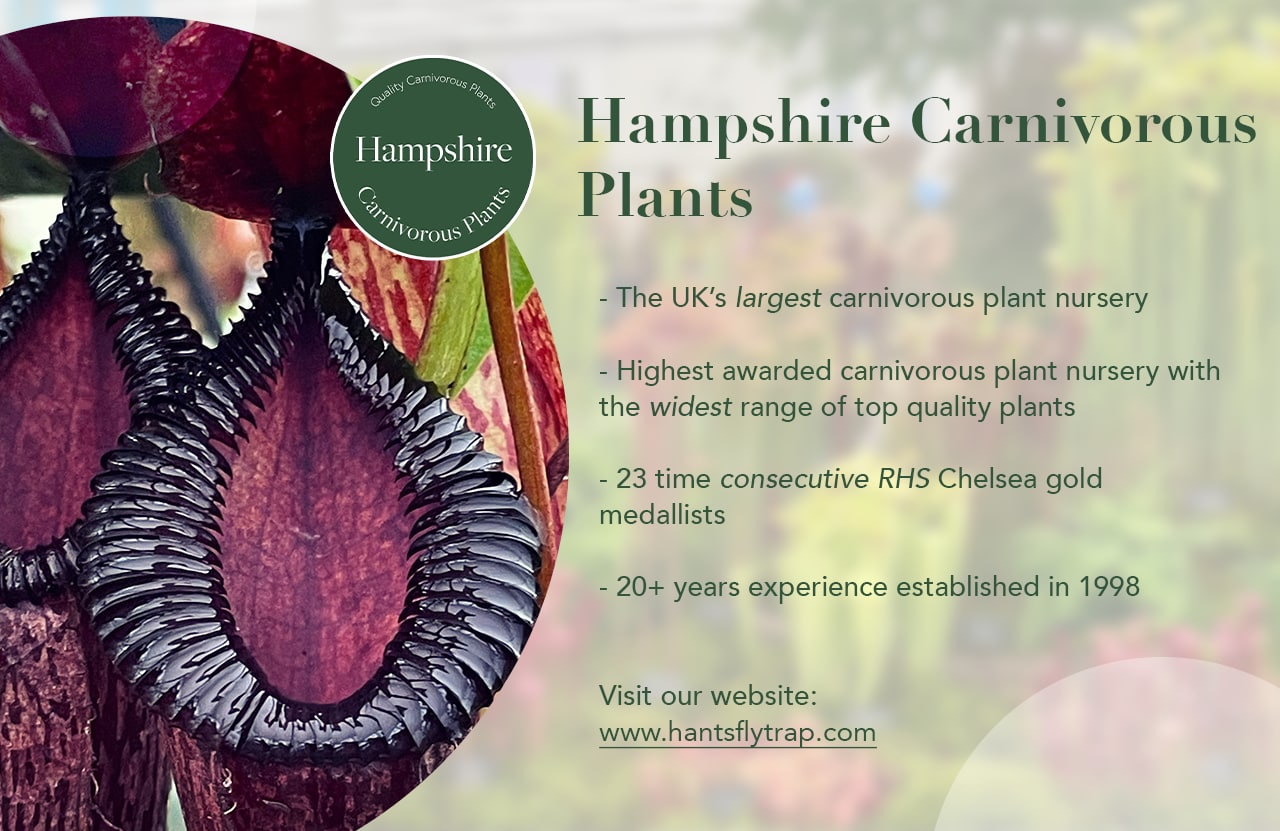Nepenthes jamban
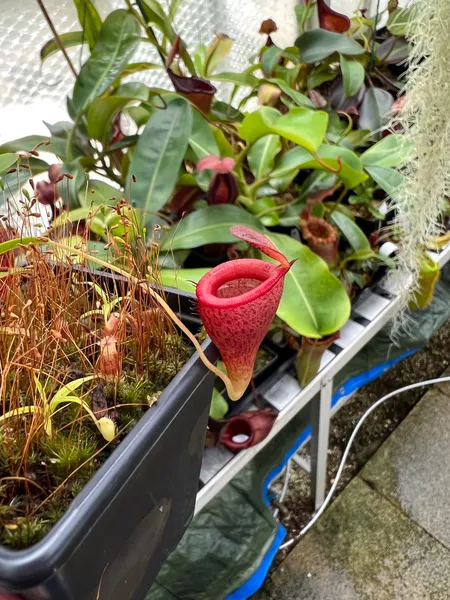 A lower pitcher on an N. jamban seedling - these have a far less dramatic shape
A lower pitcher on an N. jamban seedling - these have a far less dramatic shape 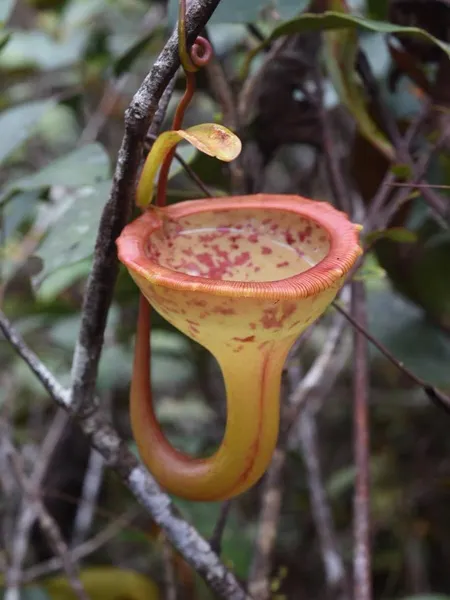 An upper pitcher in-situ, photographed by Jeremiah Harris
An upper pitcher in-situ, photographed by Jeremiah Harris _%20the%20pitcher%20plant%20named%20for%20its%20toilet-shaped%20pitchers.BIAZ2BfN_115jGx.webp) N. jamban (BE-3875), the pitcher plant named for its toilet-shaped pitchers
N. jamban (BE-3875), the pitcher plant named for its toilet-shaped pitchers 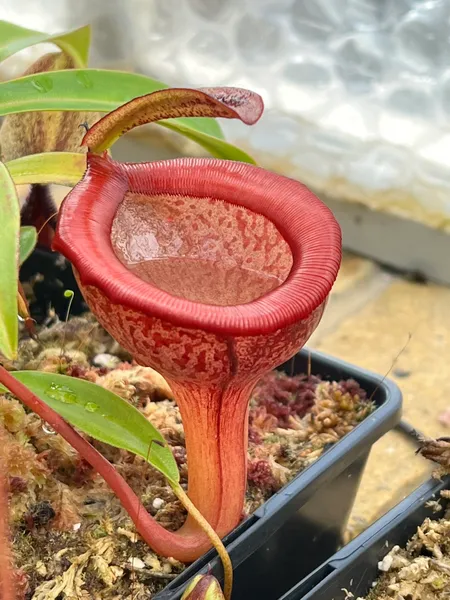 Pitchers are full of a thick and highly viscous fluid
Pitchers are full of a thick and highly viscous fluid 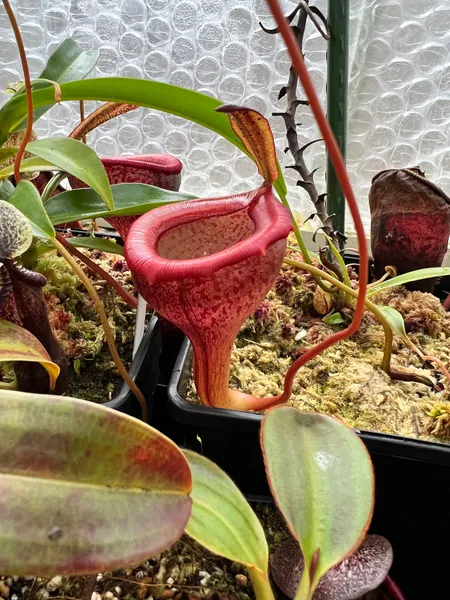 The pitchers inflate on the ends of particularly long tendrils
The pitchers inflate on the ends of particularly long tendrils 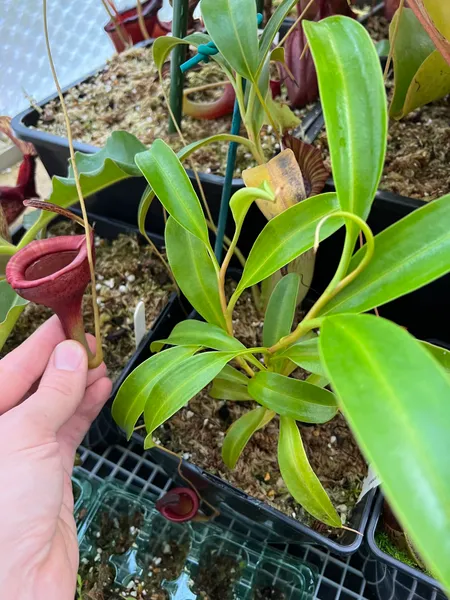 This one has lots of growth points and needs a good prune!
This one has lots of growth points and needs a good prune! Description & Care
Nepenthes jamban is a lovely Sumatran species named for its unique toilet-shaped upper pitchers (the word “jamban” meaning “toilet” in Indonesian). The species was first described in 2006, and it’s a native of upper montane mossy forests in Northern Sumatra, where it grows terrestrially.
This species stays relatively small, with thin dainty leaves and pitchers that rarely get larger than 10cm or so. It starts vining when relatively small, and the climbing stems benefit from the support of a stake or frame. I’d also suggest regular pruning, to encourage a nice bushy plant.
The famous upper pitchers - which can be lime green, yellow, orange, or red - have a flat, circular opening and are filled with thick, highly viscous fluid. In this respect it’s similar to related species like N. inermis and N. jacquelineae - tip over a pitcher, and the fluid will slowly pour out in an unbroken stream like glue. This characteristic helps the pitcher to function as a flypaper trap, like a sundew, as well as a pitfall trap, and helps the plant to catch large prey items (relative to its small pitchers). I often find big flying insects in N. jamban pitchers.
I grow two forms of this species: the Borneo Exotics two-clone release (BE-3875) and a couple of individuals from a new seed grex. All seem to enjoy proper highland conditions. As long as you can provide bright light, a good nighttime temperature drop, and nice high humidity, Nepenthes jamban should thrive and grow fairly quickly.
How I Grow It
| Media | Long fibre sphagnum moss, perlite, and - optionally - orchid bark (2:1:1). |
| Water | Damp but not wet. |
| Light | Very bright, diffused light. |
| Fertiliser | Maxsea or liquid orchid feed in the pitchers, every two weeks. |
| Temperatures | A true highlander - needs a good nighttime temperature drop. |
| Humidity | Benefits from high humidity - I keep this species close to my fogger. |
Learn more about cultivation with my guide to growing Nepenthes.
Day & Night Temperatures
Nepenthes jamban is a highland species, found at elevations of between 1800 and 2100 meters. This range is highlighted in orange above, and equates to temperatures of approximately 22 - 26°C during the day, and 12 - 16°C at night.
Habitat
| Native to | Sumatra |
| IUCN Red List status | Critically Endangered |
| Natural hybrids | N. dubia, N. lingulata |
Buying N. jamban
| Availability | Widely available thanks to tissue culture, but always popular so often sells out quickly. |
| Borneo Exotics codes |
|
| Recommended nursery | California Carnivores Hampshire Carnivorous Plants |
